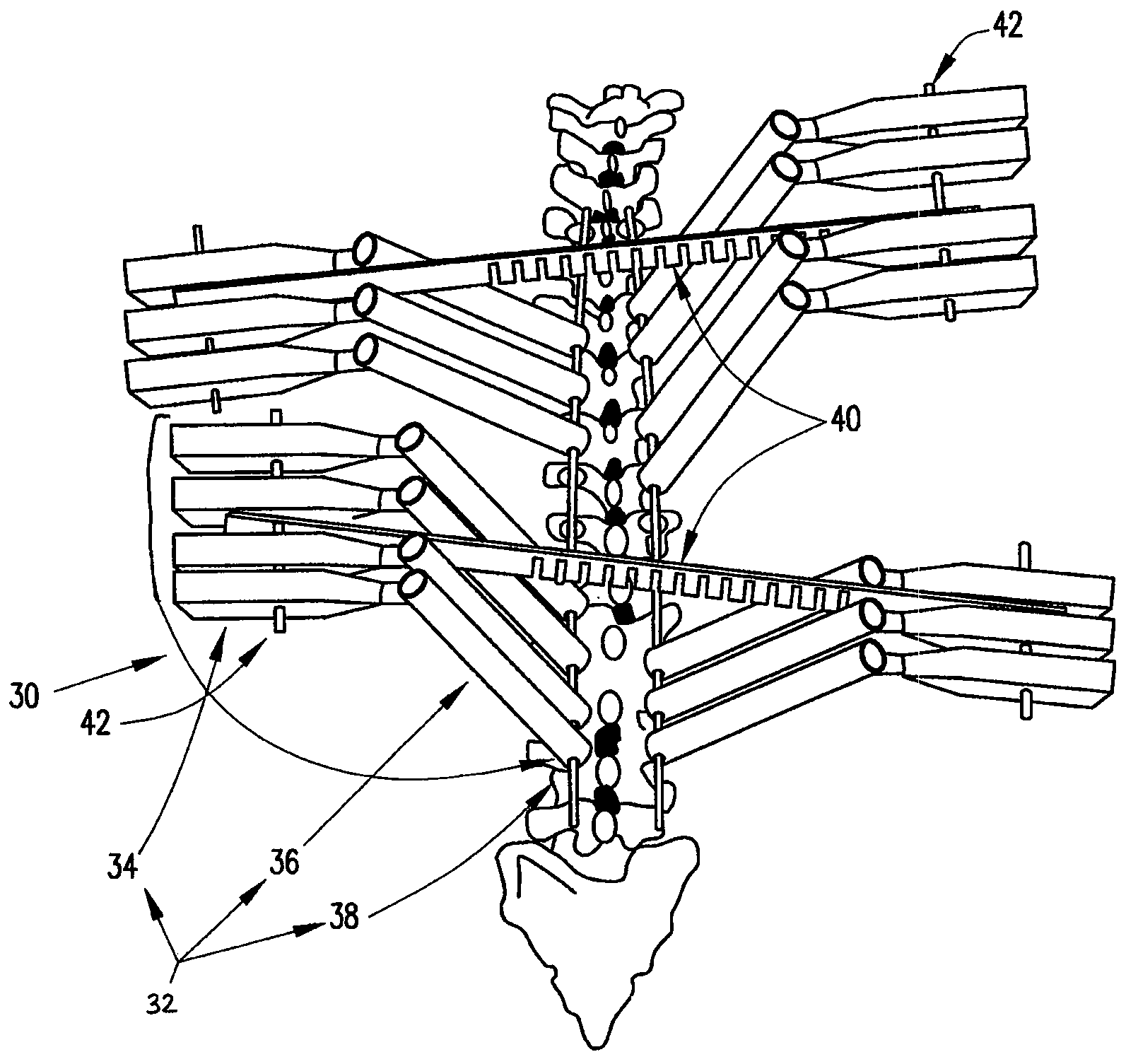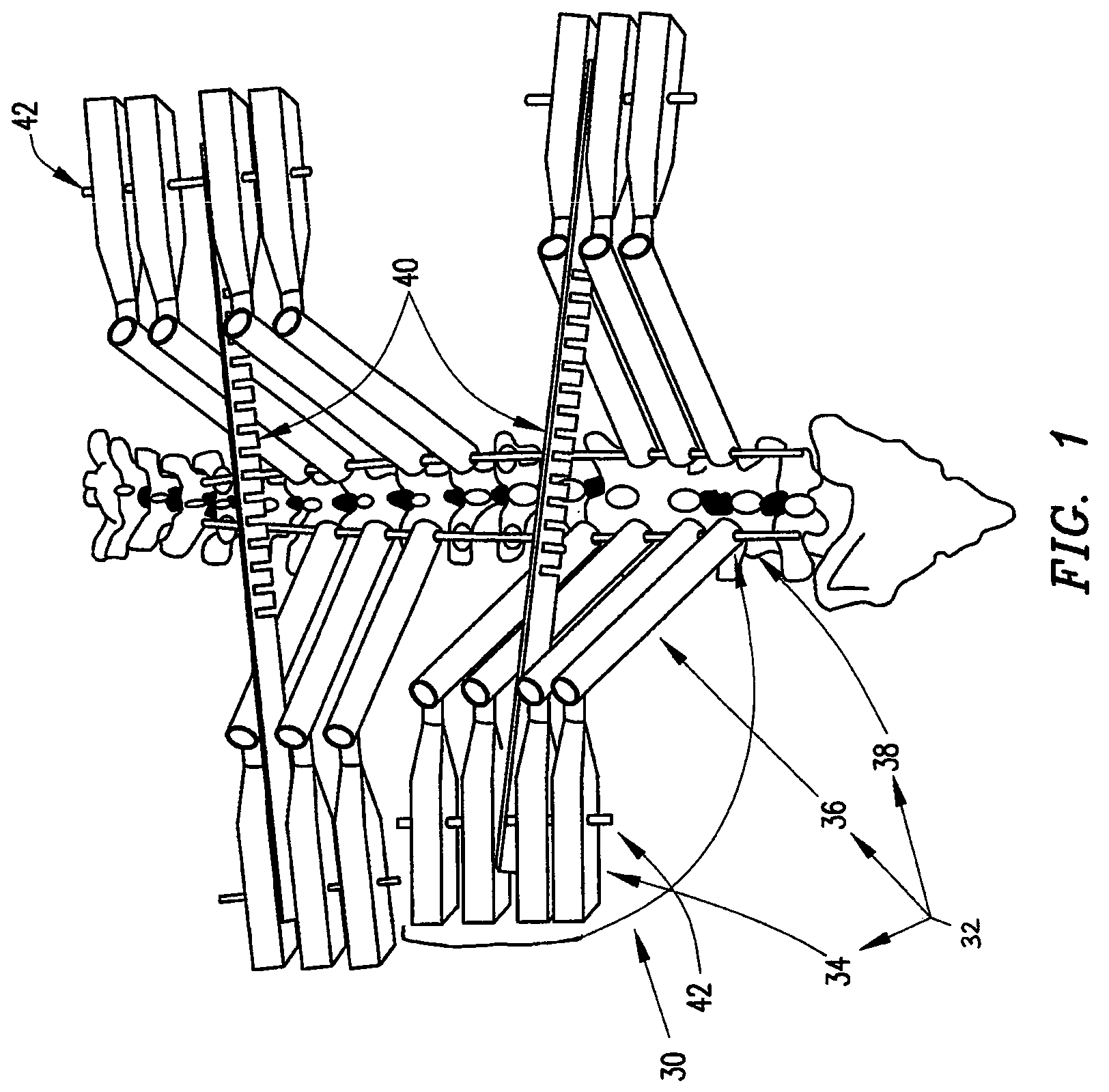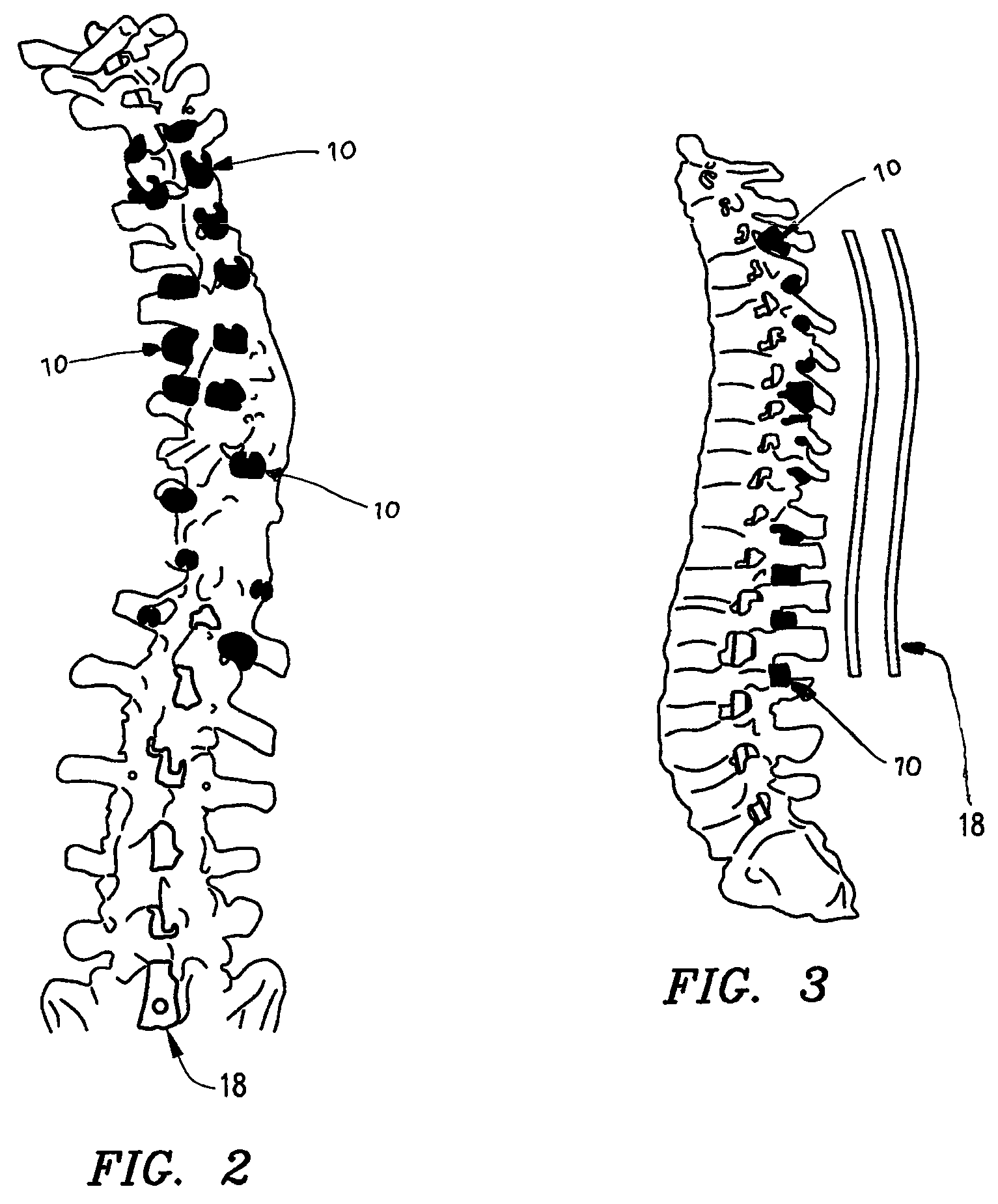System and method for aligning vertebrae in the amelioration of aberrant spinal column deviation conditions
a technology of aberrant spinal column deviation and alignment method, which is applied in the field of spinal deformation management and correction methods and equipment, can solve the problems of pressing against the lungs, affecting the treatment of spinal deviation anomalies, and presently affecting the conventional treatment and instrumentation for spinal deviation anomalies, so as to facilitate the application of significant derotational forces, reduce the risk of fracture, and facilitate the effect of for
- Summary
- Abstract
- Description
- Claims
- Application Information
AI Technical Summary
Benefits of technology
Problems solved by technology
Method used
Image
Examples
Embodiment Construction
[0040]With reference to FIGS. 1-4, the spinal deviation correction system of the present invention includes a number of pedicle screws 10, each implanted in respective vertebrae to which rotative forces will be applied in a spinal anomaly correction.
[0041]Pedicle screws 10 may be of a variety of designs, such as, for example, are generally depicted in U.S. Pat. Nos. 6,743,237 (Gray, et al), 6,827,719 (Ralph, et al), 6,652,526 (Arafiles), 6,375,657 (Doubler, et al), the disclosures of which are incorporated herein by reference.
[0042]With particular reference to FIG. 4, pedicle screws 10 will include a threaded shank segment 12 and a head segment 14. Head segment 14 will be configured with a spinal rod conduit (or channel) 16 or interfacing with a spinal rod 18 (shown in FIG. 3). Spinal rod engagement means 20 serve to fix pedicle screw 10 and spinal rod 18 in relative position and orientation, once a spinal column derotation is complete.
[0043]Referring again, generally to FIGS. 1-4, ...
PUM
 Login to View More
Login to View More Abstract
Description
Claims
Application Information
 Login to View More
Login to View More - R&D
- Intellectual Property
- Life Sciences
- Materials
- Tech Scout
- Unparalleled Data Quality
- Higher Quality Content
- 60% Fewer Hallucinations
Browse by: Latest US Patents, China's latest patents, Technical Efficacy Thesaurus, Application Domain, Technology Topic, Popular Technical Reports.
© 2025 PatSnap. All rights reserved.Legal|Privacy policy|Modern Slavery Act Transparency Statement|Sitemap|About US| Contact US: help@patsnap.com



